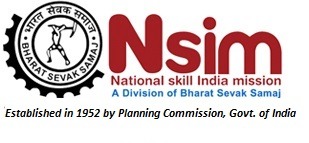Stories you may like
Top 10 Custom Features for Your Services Marketplace in 2025
Scrolling through service apps in 2025 feels like flipping through Netflix—so many options, but only a few actually “get you.” Suppose you’re building a scalable services marketplace. In that case, standing out isn’t just about a sleek logo or a flashy tagline—it’s about custom features that Gen Z users and busy millennials use.
Think AI‑driven job matching, hyperlocal targeting, and frictionless in‑app payments. According to Statista, 74% of users ditch a marketplace if onboarding feels clunky, which makes user experience your golden ticket.
We’ve worked with fast‑growing platforms and SaaS innovators who know that surviving 2025’s competitive landscape means delivering more than just listings—it’s about personalization, automation, and trust‑building mechanics baked right into your product. In this guide, we’re breaking down the “Top 10 Custom Features” every forward‑thinking services marketplace needs to stay ahead this year. Spoiler: it’s not just AI chatbots anymore.
Features for Your Service Marketplace
Before you start copying what everyone else is doing, remember—2025’s users are tech-savvy, picky, and used to algorithmic convenience. To truly compete, your services marketplace needs more than just listings. Let’s break down the 10 must-have custom features dominating product requests in 2025.
AI‑Driven Job & Service Matching
AI-driven matching has evolved into the backbone of modern marketplaces. By analyzing user behavior, preferences, booking history, and even time-of-day interactions, machine learning (ML) models can instantly connect users with the right service provider.
Predictive analytics goes a step further by anticipating needs—offering suggestions before users actively search. For example, if someone books a dog walker every Friday evening, the platform can preemptively recommend the same provider. Natural language processing (NLP) enhances search queries, ensuring that even vague inputs like “fix leaky sink” direct users to the right plumber.
A 2025 McKinsey Digital report notes that marketplaces using AI-based matching see up to a 30% increase in conversions. Beyond user delight, AI also benefits providers, increasing visibility and reducing idle time. Ultimately, integrating AI matching transforms a basic marketplace into a dynamic ecosystem that feels intuitive and personalized, encouraging repeat engagement and stronger trust in your platform.
Hyperlocal Service Discovery
In service marketplaces, relevance is everything—and hyperlocal discovery is the ultimate conversion booster. By using geo-fencing, GPS tracking, and location-based algorithms, marketplaces can automatically display nearby providers to users. This proximity-first approach improves response times, encourages faster bookings, and builds instant trust because users see options “just around the corner.” Leveraging strategies like these aligns with the benefits of hyperlocal targeting for apps like TaskRabbit, which shows how localized services can drive higher conversions and community engagement.
Companies like TaskRabbit and Rover have thrived by prioritizing hyperlocal connections, reporting a 23% increase in service completion rates after implementing tighter radius targeting. Hyperlocal services also enable personalized promotions—think neighborhood discounts or seasonal offers tied to local events. For eco-conscious Gen Z and millennials, hyperlocal also means fewer emissions from long commutes, aligning your brand with sustainability.
Advanced implementations combine real-time maps, AI-driven route optimization, and automated availability updates to create seamless user journeys. According to McKinsey, localized marketplaces achieve nearly double the booking rate of generic, non-targeted platforms. By focusing on hyperlocal discovery, you’re not just connecting users with providers—you’re embedding your platform into the fabric of the community.
Seamless Multi‑Channel Communication
Communication is no longer an optional feature—it’s the heartbeat of a thriving marketplace. Users want instant updates and real-time coordination across their preferred channels. By integrating in-app messaging, SMS notifications, email, and push alerts into a unified system, your marketplace prevents missed messages and improves trust.
Tools like Twilio or Firebase allow automated notifications for bookings, cancellations, and reminders, ensuring that both users and providers remain in sync. Gen Z, in particular, demands speed; HubSpot’s 2024 CX report found that 85% of users expect responses within minutes. Features like voice notes, image sharing, and read receipts create transparency and reduce disputes. Unified communication also improves retention since users feel supported without leaving the app.
Moreover, automated follow-ups, post-service feedback requests, and promotional notifications Moreover, automated follow-ups, post-service feedback requests, and promotional notifications can increase re-booking rates by up to 25%. Implementing these features aligns perfectly with the insights that your TaskRabbit-like app needs to win users’ confidence, where consistent communication and reliability are highlighted as top trust-builders.
One‑Click In‑App Payments & Split Billing
Frictionless payments are non-negotiable in 2025. Marketplaces that allow users to pay with one click using integrated wallets, Apple Pay, Google Pay, or Stripe Connect create a checkout process that mirrors top e-commerce platforms. Split billing takes convenience further, allowing friends, roommates, or co-workers to share service costs—essential for event planning, ride-shares, or home services.
According to GWI’s 2025 fintech study, 41% of marketplace users now actively prefer platforms offering split-payment functionality. Security is also a credibility marker; ensure compliance with PCI DSS standards and use tokenization to protect sensitive data. Real-time settlements give providers instant visibility of their earnings, improving loyalty.
Faster, safer payments not only enhance user trust but also directly reduce cart abandonment rates. By removing friction at checkout, you position your platform as reliable, modern, and user-first. This principle reflects the revenue-focused strategies discussed in Services That Can Maximize Revenue in a TaskRabbit-Like Platform, where optimized payments are shown to drive repeat usage and higher lifetime value.
Gamification & Loyalty Programs
Gamification is no longer a novelty—it’s a proven retention powerhouse. Marketplaces now use points, badges, reward tiers, and level-up mechanics to incentivize repeated engagement. For instance, users who book five services in a month might unlock a discount or a special badge, triggering a dopamine-driven sense of achievement. Providers benefit too, as leaderboards and loyalty programs drive them to maintain higher ratings and responsiveness.
According to Think with Google, 60% of Gen Z users show higher brand loyalty when rewarded through gamified experiences. Referral programs tied to points or free services can organically boost user acquisition. To make gamification effective, combine it with time-limited challenges, seasonal events, and visible progress tracking in-app.
When done right, gamification turns a transactional platform into a sticky, community-driven ecosystem, reducing churn and driving viral growth. This approach supports the growth frameworks outlined in Top Mistakes to Avoid When Building a TaskRabbit Like App, where overlooking engagement tools like gamification is cited as a common pitfall.
Advanced Review & Reputation Systems
In a world of fake ratings, credibility is currency. Marketplaces in 2025 use AI-enhanced review systems that verify transactions before allowing feedback, auto-flag suspicious activity, and provide granular scoring categories like punctuality, communication, and quality.
Visual feedback—photos or videos—adds authenticity and helps future users make confident decisions. Deloitte’s 2024 UX research found that platforms with advanced review mechanisms enjoy 35% higher conversion rates because trust drives bookings. Reputation algorithms now calculate provider scores dynamically, incorporating review sentiment and response times.
By integrating these trust signals across listings, search results, and notifications, you increase user confidence and create a transparent environment. Regular prompts for honest reviews and AI moderation to prevent abuse keep the ecosystem healthy. When users can trust your reviews, they can trust your platform.
Consistent review management reflects best practices from how to build an app like TaskRabbit in easy steps, where review moderation and verified ratings are emphasized as non-negotiables for sustainable growth.
AR/VR Previews & Interactive Listings
Augmented and virtual reality have moved from sci-fi to must-have. AR allows users to preview services like home cleaning setups, landscaping changes, or haircuts in their own environment. VR adds immersive experiences for event planning, real estate, or premium service previews, reducing hesitation and refund requests.
According to Snap’s AR Trends Report, 71% of Gen Z users feel more confident purchasing services when AR is involved. Interactive listings that let users rotate 3D visuals, simulate outcomes, or take virtual walkthroughs create a richer decision-making process.
Service providers also benefit by reducing consultation time and setting accurate expectations. This feature positions your marketplace as cutting-edge, delighting users with a “try before you buy” experience that directly drives conversions.
Subscription & Membership Models
Subscriptions turn casual users into loyal customers while giving providers predictable revenue. Offering membership plans with perks like discounted bookings, priority access, or exclusive providers can boost retention significantly.
Platforms adopting subscription models in 2024 reported a 27% increase in ARPU (average revenue per user). Tiered memberships also create aspirational value, encouraging users to upgrade for premium benefits. Providers appreciate subscription tiers that bring them recurring leads or reduced commission fees.
Combining memberships with personalized perks—like birthday offers or early access to high-demand services—deepens emotional engagement. This recurring revenue model future-proofs your marketplace by stabilizing income and enhancing lifetime value per user.
Custom Analytics Dashboard for Users & Providers
Knowledge empowers action. Offering real-time analytics dashboards transforms your marketplace from a transactional hub into a business tool for providers. Using data visualization platforms like Tableau, Power BI, or embedded BI solutions, providers can track leads, earnings, response times, and customer ratings.
Users gain insights into spending patterns and service history, which helps them plan future bookings. Platforms that provide actionable analytics see a 19% increase in provider satisfaction and engagement. Bonus points for predictive analytics that offer next-step suggestions, like “80% of your customers rebook in three weeks—offer a discount now.” These insights improve retention, encourage upsells, and differentiate your marketplace as a growth partner, not just a platform.
Smart Automation & Workflow Triggers
Automation is your silent growth engine. By setting up triggers for reminders, rebooking nudges, feedback requests, and promotional offers, marketplaces reduce manual workload while increasing engagement. Zapier-style logic can be built into your platform: if a user hasn’t booked in 14 days, send a reminder; if a provider’s calendar is filling up, suggest surge pricing.
Drift’s 2025 automation report shows that smart workflows improve response rates by 40% and reduce operational overhead by 25%. Automated sequences ensure no opportunity slips through the cracks, and users feel guided without human intervention. In 2025, automation isn’t just efficiency—it’s a strategic tool that keeps your marketplace competitive and scalable.
Dominate the Gig Economy with Oyelabs’ TaskRabbit Clone
Launch your own hyperlocal service marketplace with our clone by Oyelabs, a fully customizable, scalable platform engineered with a microservices architecture and robust APIs. Designed for 99.9% uptime and enterprise-grade security, it empowers startups to rapidly capture gig economy opportunities. Our AI-driven job matching and real-time geo-tracking enhance user experience, while integrated payment gateways and automated dispute resolution ensure operational efficiency.
Trusted by 50+ global entrepreneurs, Oyelabs delivers ISO-certified solutions backed by 24/7 technical support and post-launch growth consulting. If you want to monetize local services fast, our ready-to-deploy TaskRabbit clone is your ultimate shortcut to market leadership.
Conclusion
Building a service marketplace that thrives in 2025 isn’t about flashy branding—it’s about features that deliver personalization, speed, and trust. From AI-driven matching to hyperlocal discovery and AR/VR experiences, these features transform casual users into loyal advocates. The key is to blend smart automation, secure payments, and engaging experiences like gamification into a seamless platform that feels intuitive from the first tap.
By implementing these 10 custom features, you position your marketplace as future-ready, competitive, and loved by both Gen Z and millennial users. Stay agile, keep innovating, and watch your marketplace evolve from a simple listing hub into a growth engine for your entire ecosystem





User's Comments
No comments there.